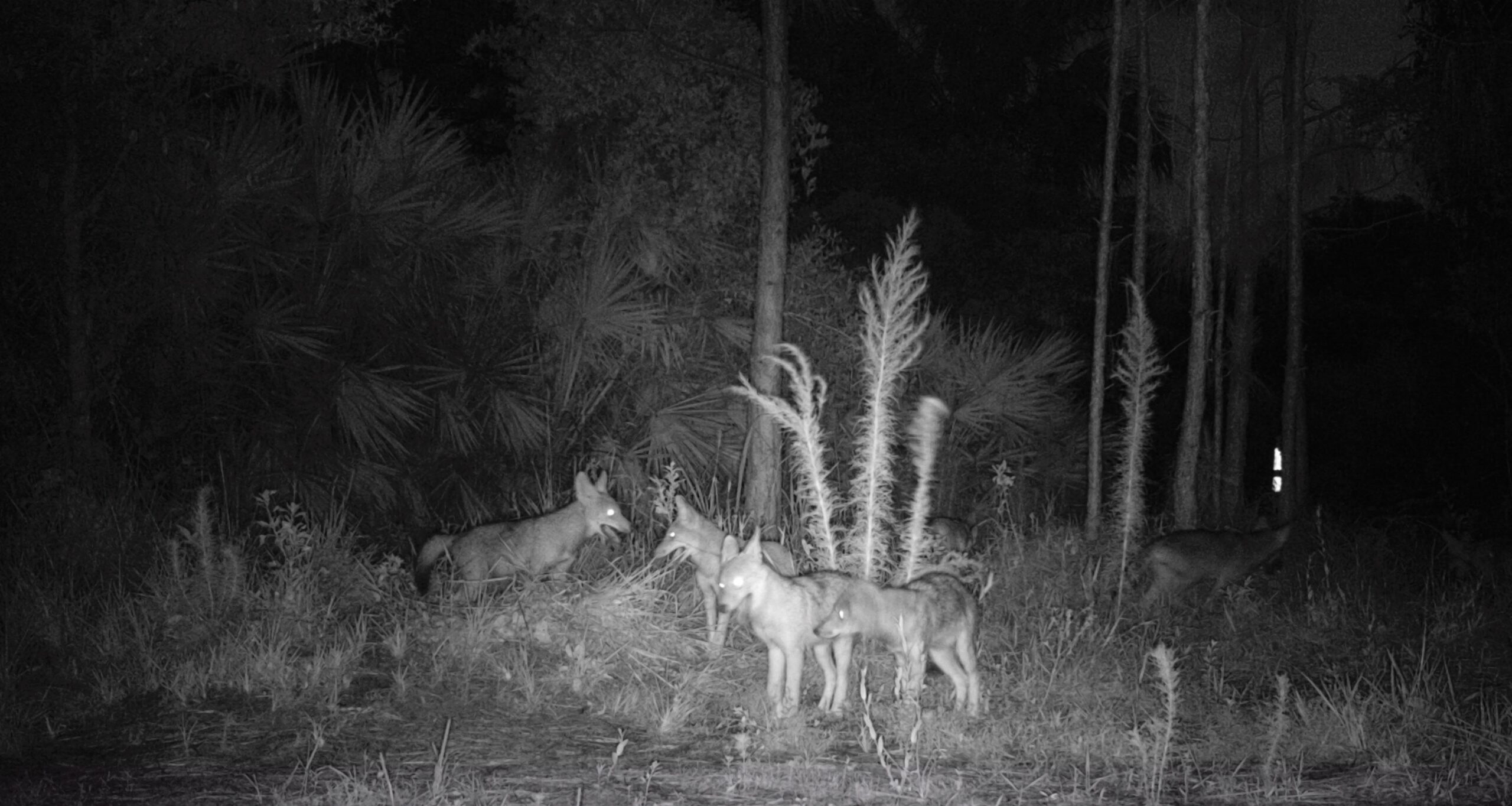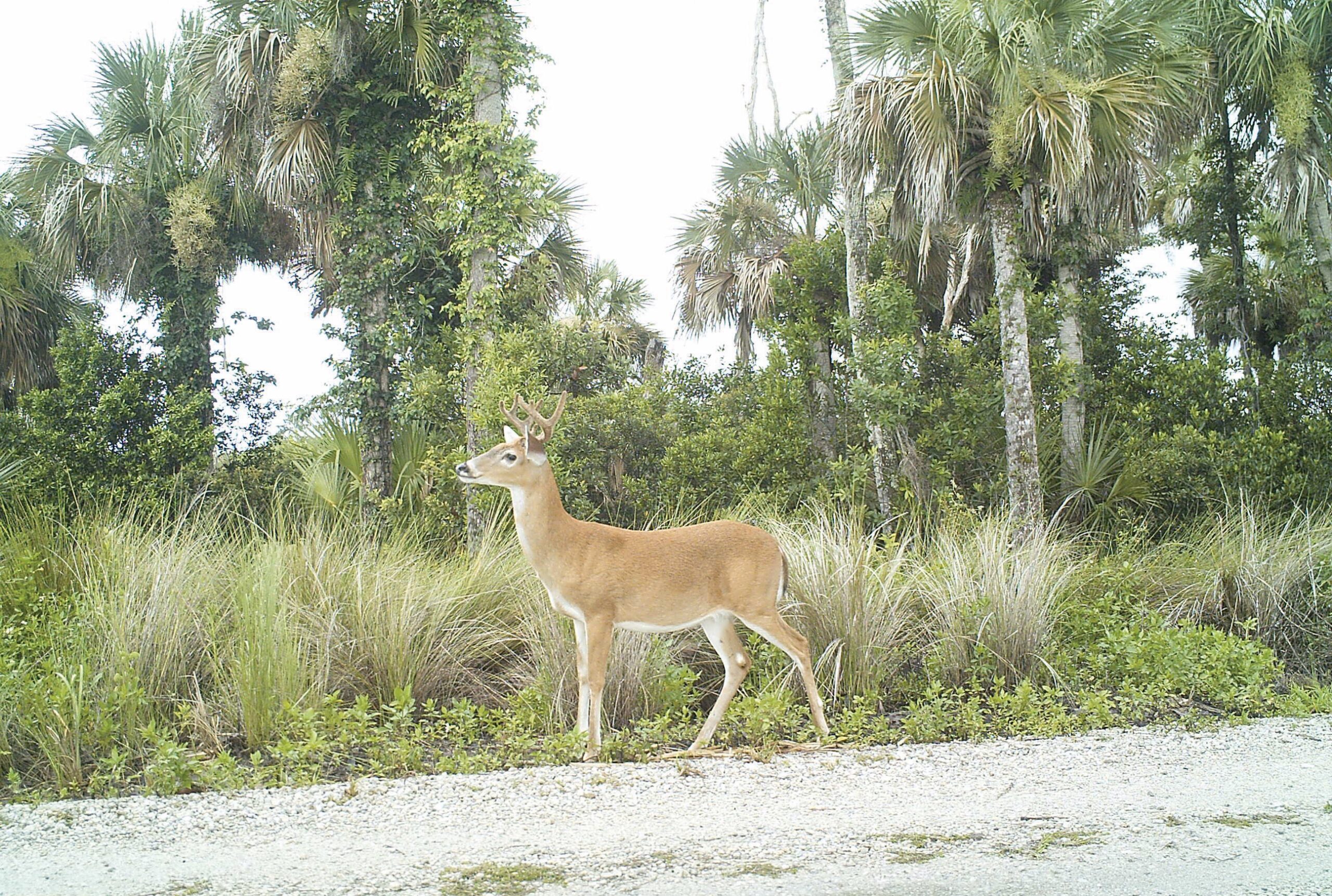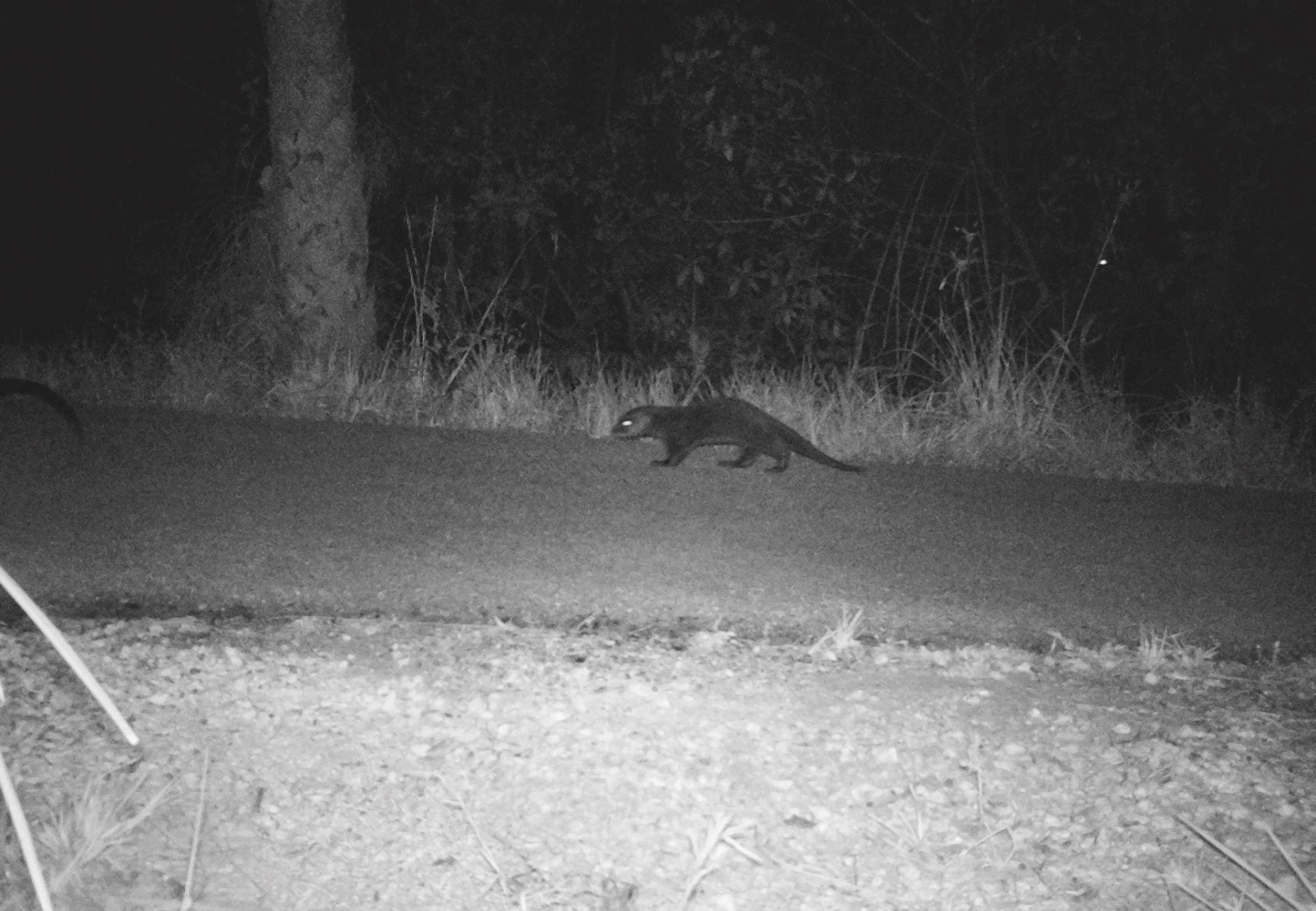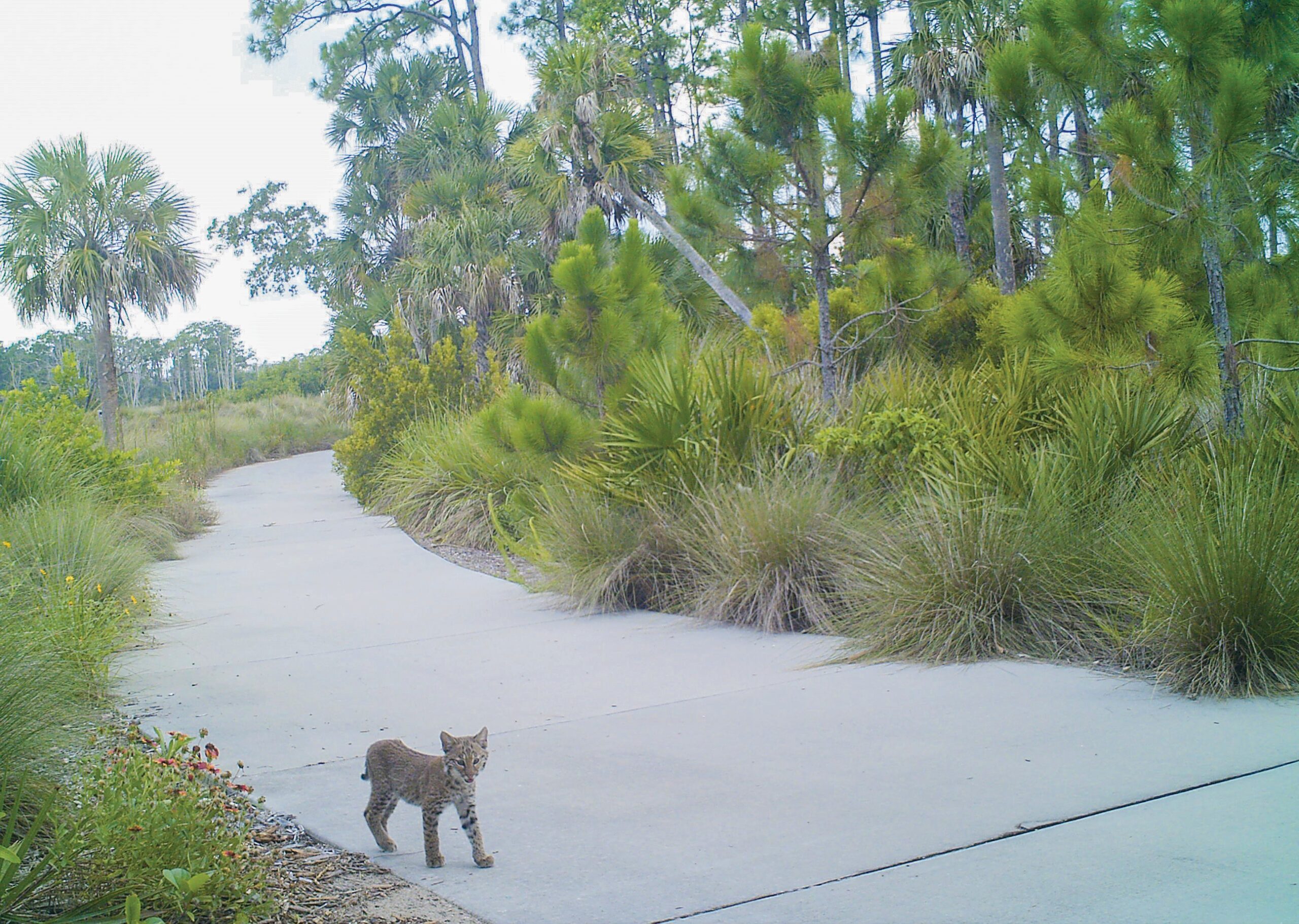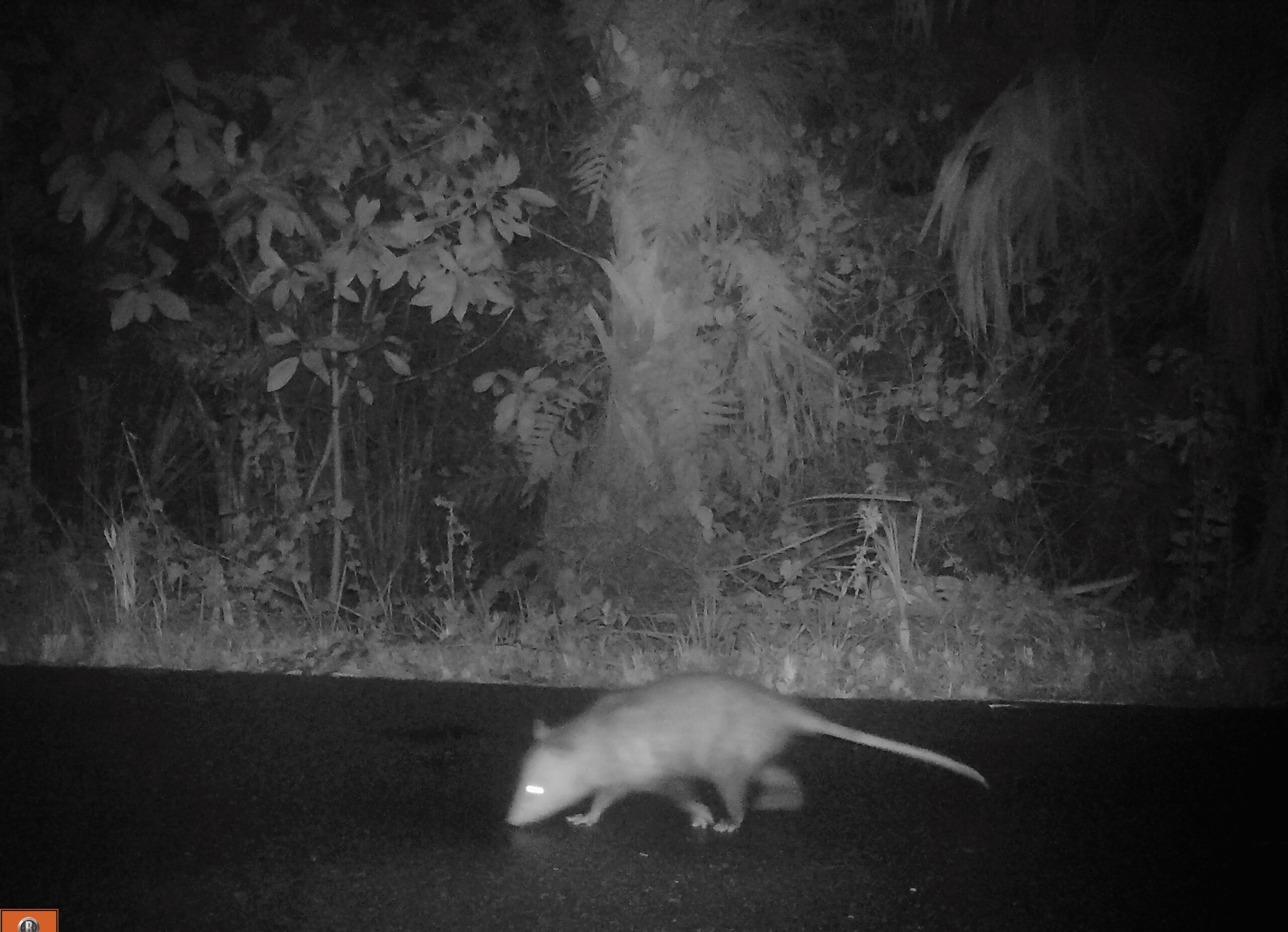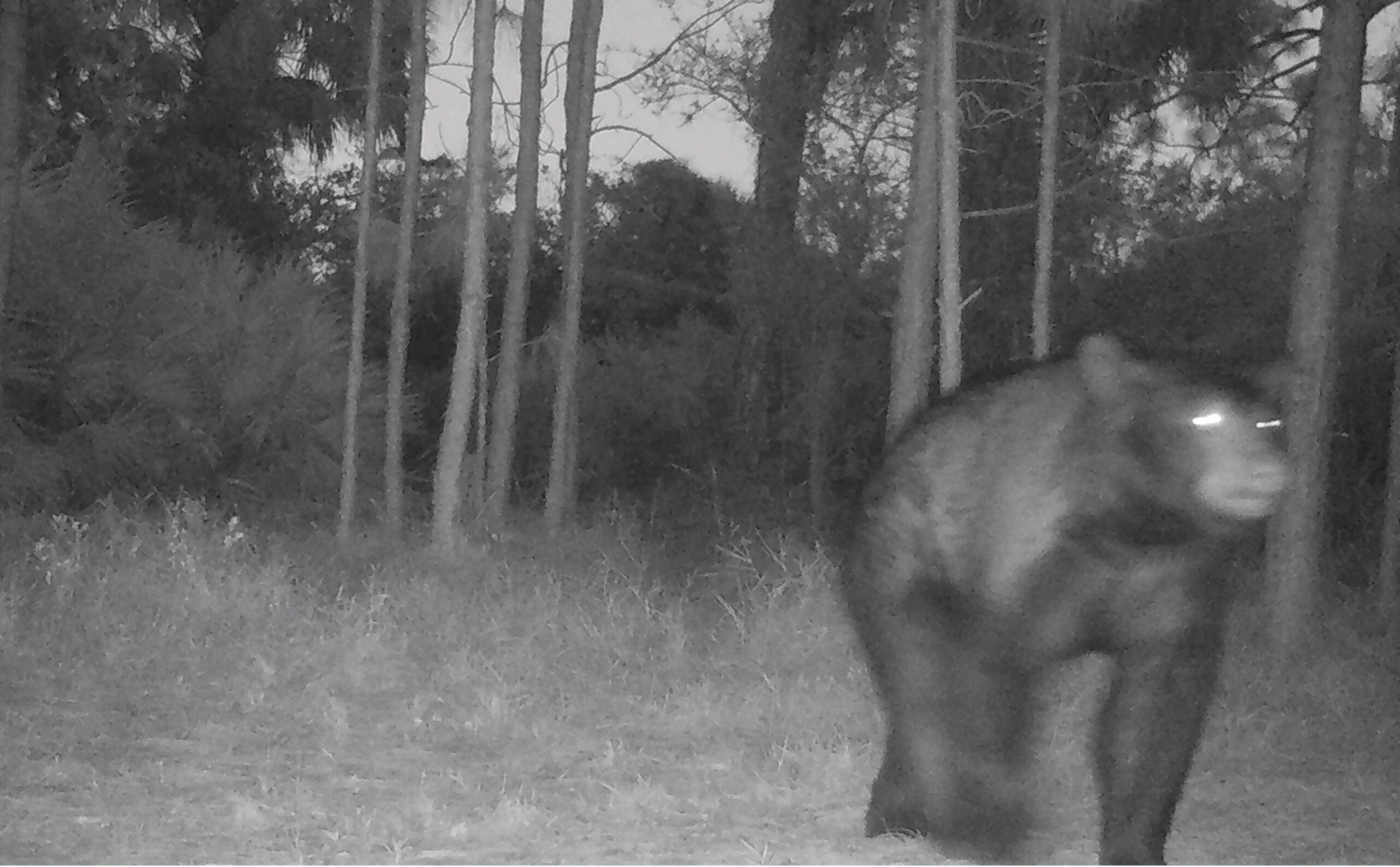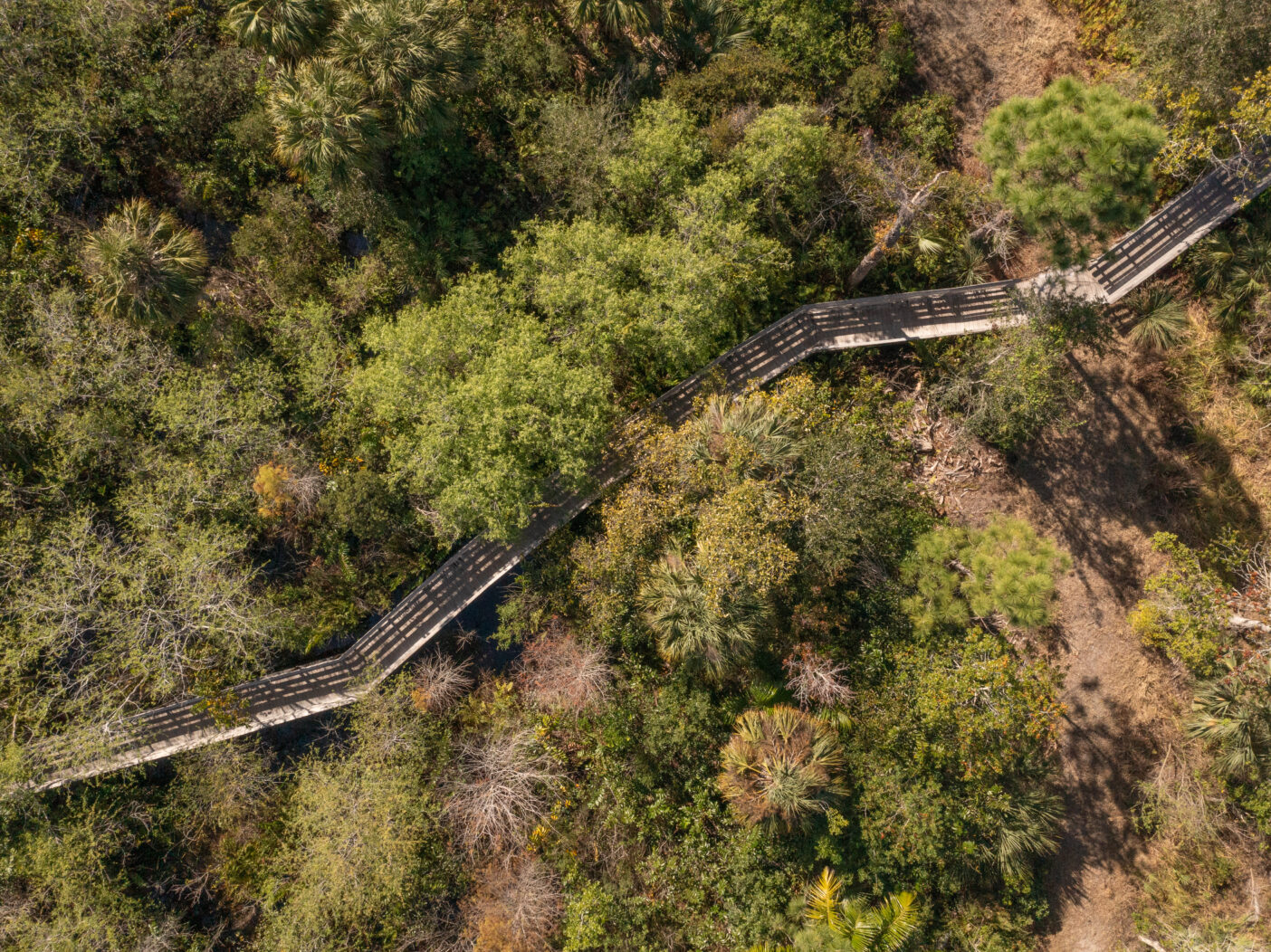
Photos by John Eder
If a botanical garden is a museum of plants, surely our 90-acre Preserve comprises its galleries.
In a moderate timespan — 60 to 90 minutes depending on your pace and power of observation — you can peer across a marsh, trek through a sandy coastal scrub, study a pine flatwood’s needled canopy, traverse elevated forest patches known as “hammocks,” and tromp across a pond apple swamp (ghost orchid habitat), safely dry-footed on a boardwalk.
“I think it’s neat that in a small space, we have a pretty varied, diverse landscape,” says Natural Resources Director Eric Foht. “There are places where you could buy this much land, and it would all be pine flatwoods.” The habitat variation is nature’s doing, not ours, but Foht and his team are charged with managing the land in a way that maintains each ecosystem’s characteristics.
What makes the Preserve special? For one, it’s rare for a botanical garden to manage both cultivated spaces and natural ecosystems on a single property. Our guests, in turn, can admire plants as human-designed artistry and plants as arranged by Mother Nature’s design. The Preserve is crucial for conservation, where we protect Southwest Florida native plants in their own habitats, as well as collect their seeds for long-term storage. We use it for research — to study matters such as stormwater management, for example — and offer access to scientists, professors, and students.
The land is critical wildlife habitat, as Conservation Horticulture Manager Jessica DeYoung points out: “Wildland in Florida is disappearing. Preserves are becoming that much more important, even if they are fragments and not connected. They still serve as a respite.”
The Preserve is a respite for humans, too, and that’s where we’ll start.
“There’s just something different about a place that wasn’t designed by humans.”
Eric Foht, Director of Natural Resources
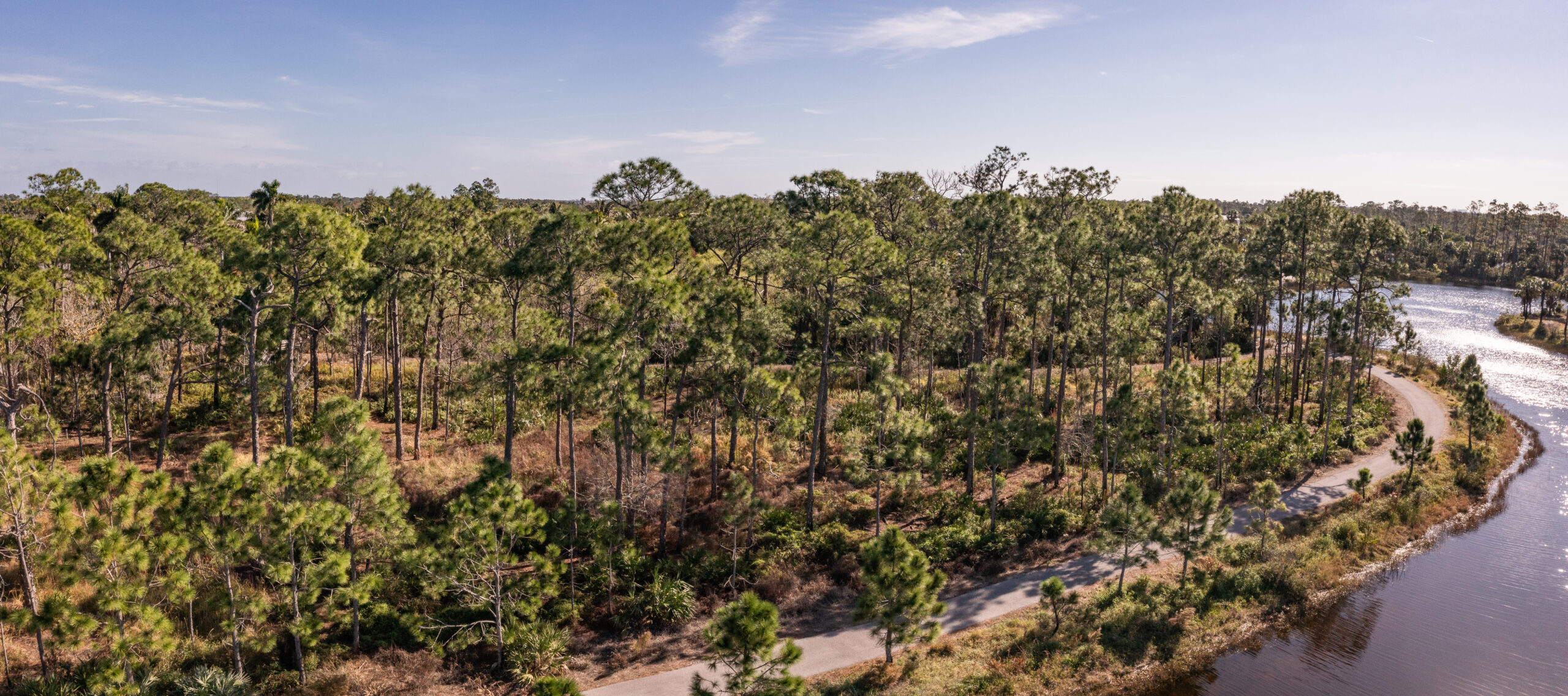
How to enjoy the Preserve
“(The Preserve) is like a screenshot to the past, but it still exists in the present,” DeYoung muses. It is how Southwest Florida appeared in the centuries before it became a tourism mecca and development hotspot.
“There’s just something different about a place that wasn’t designed by humans,” Foht says.
Our theme for 2023 – 24 is Here and Now, and a walk through the Preserve embodies the spirit of being present. “It’s easy to walk by everything because you’re trying to get somewhere,” Foht says. The Preserve is great for exercise — the Lake Trail loop is about a mile. But there’s something to be said for wandering.
Foht suggests “scanning” the landscape to take it all in. “Try to listen, and feel, and hear, and smell. There is a wealth of things to notice if you put yourself in that mindset.”
Look up and glimpse an osprey. Look down and see wildflowers or animal tracks. Listen for the wind in the pines or the pecking of a pileated woodpecker. Inhale. Can you smell the Gulf?
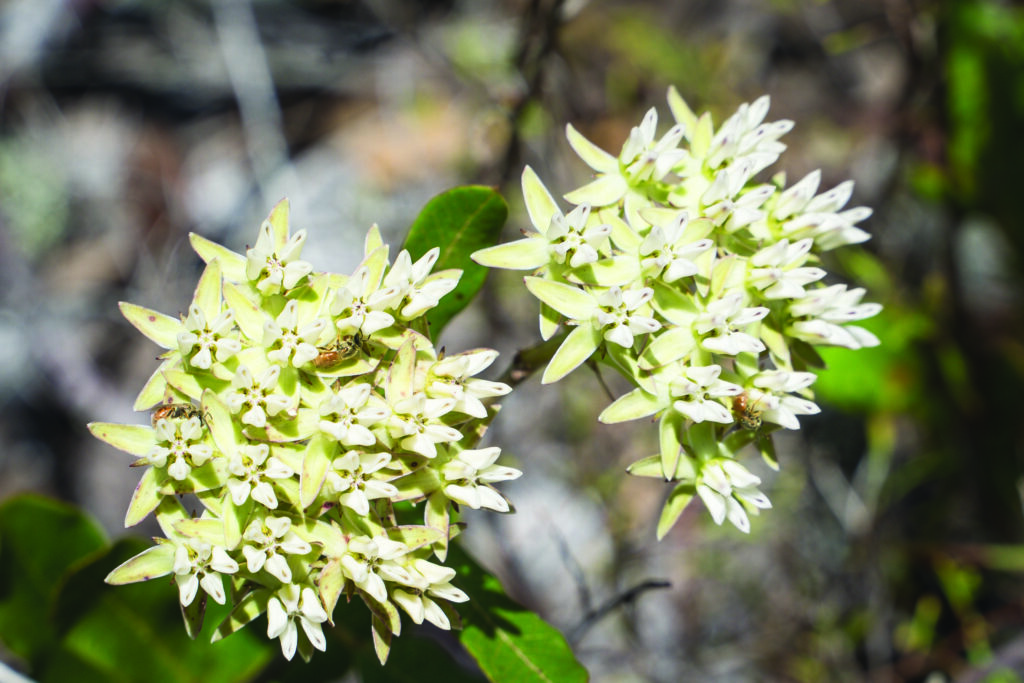
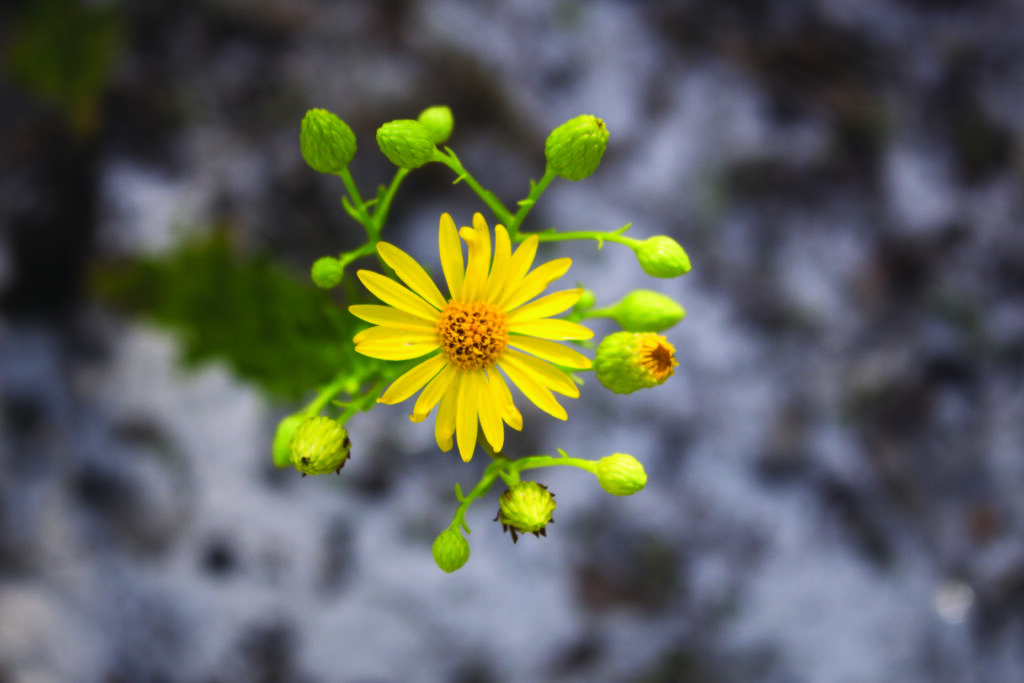
An abundance of native plants
You might wonder what’s growing in all those habitats. Dr. George Wilder can tell you. Precisely.
For a little over a year, Wilder, a botanist and curator of the Herbarium of Southwestern Florida, combed the Preserve seeking to understand its plant diversity and the boundaries of the different habitats. Foht, along with Kate Talano, a former Garden GIS (geographic information systems) specialist, and local ecologist Jean McCollom worked with him.
There are 576 species, 414 of which are native. Thirteen are endemic to Florida. That means they grow only here. Twenty-three are considered rare in Florida. They include the fuzzywuzzy airplant (Tillandsia pruinosa), Jameson’s waterlily (Nymphaea jamensoniana), Curtiss’ milkweed (Asclepias curtissii), and golden leather fern (Acrostichum aureum).
Alas, we don’t know how all these plants have fared. During Hurricane Ian, the Preserve took on as much as 8 feet of water, lessening damage to the cultivated garden, nurseries, and office buildings. It was a testament to the protective power of undeveloped land.
But Wilder, whose survey took place before the storm, suspects plants may have been lost. Though he has not embarked on a follow-up study, he has noticed an absence of some plants, including the rare waterlily. “It is my opinion that things changed after the hurricane. I would anticipate less diversity and a less pristine habitat,” he says.
The potential for loss is why our conservation horticulture specialists spend so much of their time collecting seeds of native plants in our Preserve and in places such as Rookery Bay National Estuarine Research Reserve. The seed bank holds more than 230,000 seeds.
Surprises at every turn
Foht and I tour the Preserve on a December morning. He points out the state-endangered fuzzywuzzy airplant that Wilder had noted. Tillandsia are epiphytic plants, meaning they don’t need soil. This one had implanted itself at shoulder height on a tree, out of reach of floods. Tillandsia utriculata, the giant airplant, also grows out there. Over the past 40 or so years, an invasive bug decimated its population in South Florida. The Preserve, indeed, is a refuge.
We bump into Conservation Associate Ryan Horvath, who is monitoring for invasive plants that can crowd out native species if left unchecked.
“Hey, did you know there’s Drosera right here?” he asks, gesturing to our feet. We had broken our rule and failed to scan our surroundings. This tuft (Drosera capillaris) is a native plant known as pink sundew. It eats insects. To fully appreciate the sundew, you need to crouch and examine its red tentacles and glands that emit a sticky, bugcatching mucilage. To me, they look like aliens.
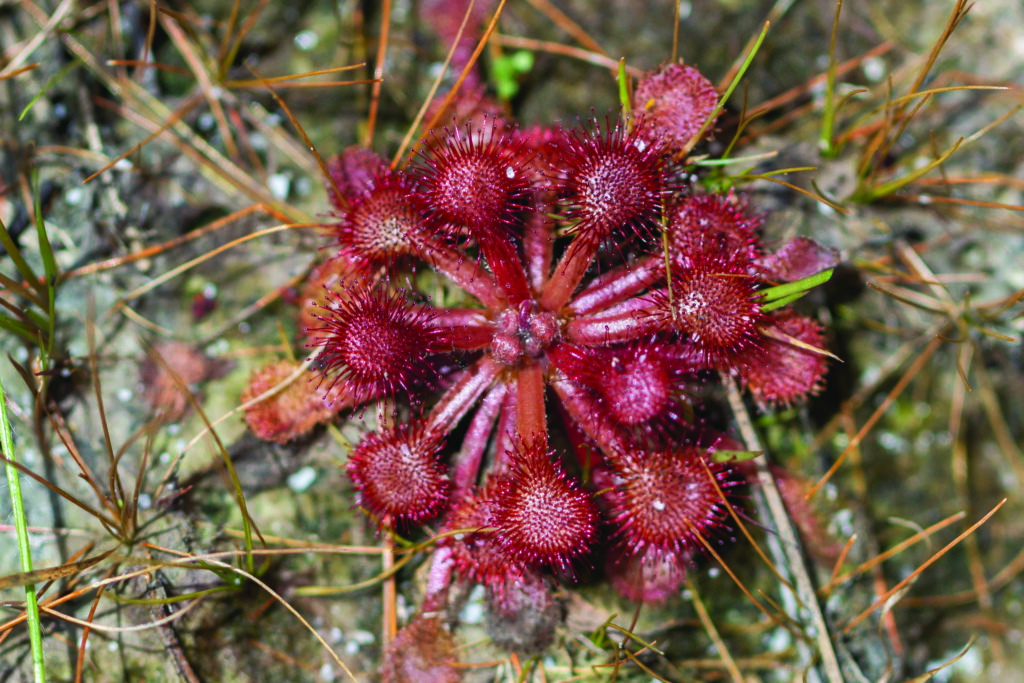
Nearby, Foht points out a long, slender netted pawpaw stem. Asimina reticulata is distantly related to the edible pawpaw fruit (Asimina triloba). The latter currently is not widely cultivated but has culinary potential. Scientists are studying how to hybridize wildgrowing relatives with farmed crops, such as A. reticulata and A. triloba, to improve disease resilience, heat and cold tolerance, drought resistance, and related stressors.
“There’s a lot of untapped potential there,” DeYoung says later when we talk about the pawpaws. She notes something I had not thought about: What other secret uses might the plants in the Preserve harbor? There’s a lot we don’t know about Southwest Florida’s native species and their potential as food or medicine or the important roles they play in their ecosystems, she says.
Fire as protector
Last year, for the first time in the Garden’s history, we burned portions of the Preserve under carefully controlled conditions. Florida habitats need fire to function as nature designed.
The blazes do everything from release seeds to reduce plant overgrowth. This allows plants that were previously crowded or unable to receive light to take root. We’re in a global biodiversity crisis — with many regions converting to near monocultures — so we’re happy to do what we can to increase species diversity.
“You see that yellow plant?” Foht asks at one of the burn sites, pointing to a small flower a few inches off the ground. “It’s a Polygala rugelii. I don’t know if it has been observed here before the fire.” This yellow milkwort is among our endemic plants — those that only grow in this area.
In another area, he’s noticed a dwarf oak species (Querus pumila) in far greater number than before. Foht also pointed out wire grass (Aristida stricta) that is flowering and setting seed. Scientific literature suggests fire prompts the plant to reproduce. “It’s doing just that,” he says.
Not to be discounted: Controlled fire is good for people. The Garden is in a residential area. By burning plant debris, such as fallen leaves and pine needles, we reduce the risk of a wildfire starting and spreading. We are entering our second year of prescribed burning.
There is still a lot to learn, such as how pine trees after years without a fire respond to a blaze and how to best manage some types of invasive plants using fire.
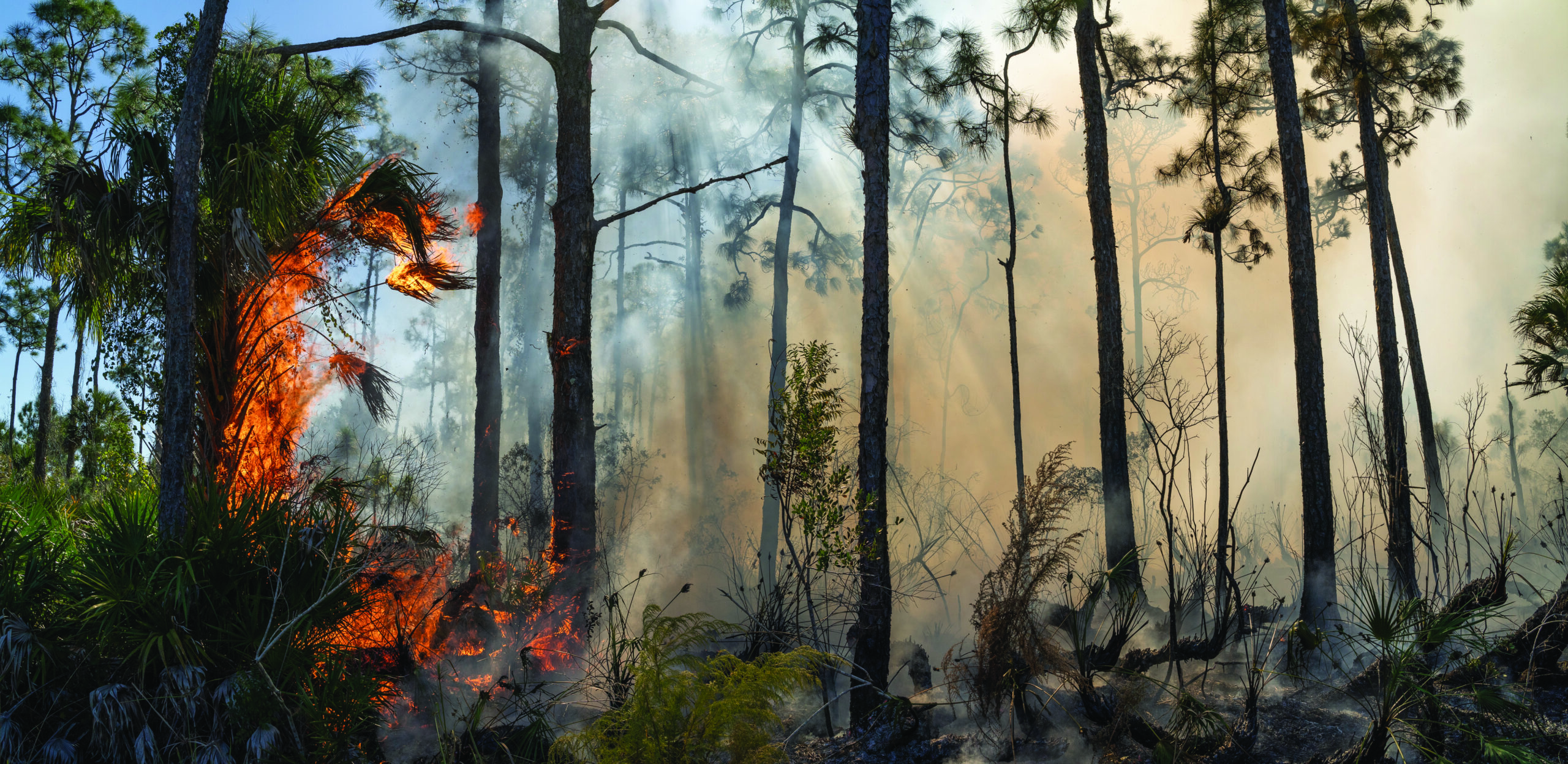
A home for wildlife
On a slightly overcast morning, Art Mattson sets out on his circuit to check the Garden’s wildlife cameras. There are six along the Lake Trail and one by the Sönne Family Ghost Orchid Boardwalk. Mattson, a volunteer, has been monitoring our cameras since 2018. They’re set to detect movement and take images after dark.
“Most of the time, I’ll be just going through images, and then, all of a sudden, ‘Wow!’” Mattson says. The “wow” could be coyotes or bobcats — a whole family of which has been spotted. More rarely, a river otter will appear. A couple of Christmases ago, when humans were sequestered in COVID-19 isolation, a panther strolled through the Preserve, likely on its way to larger conservation lands. Mattson alerted Foht right away, and the photo made a tremendous splash on the Garden’s social media feeds. A panther sighting is magical; the Florida Fish and Wildlife Conservation Commission (FWC) believes there are only 120 to 230 left in the wild.
Typically, Mattson will see five to 10 noteworthy critters and as many as 15 when wildlife activity surges.
Trail cameras capture images of wildlife. From left to right: Coyote pack, white-tailed deer, river otter, bobcat kitten, opossum (also know as Virginia opossum), Florida black bear
In addition to mammals, the Preserve is a haven for gopher tortoises. The reptiles are listed as “threatened” in Florida, and they and their burrows are protected under state law. Look for crescentshaped burrows along sandy pathways and keep your eyes peeled along the Lake Path where they might be ambling. (Naturally, we ask that you keep your distance from the tortoises and their homes.)
Birders love the Garden — a regular group meets every Tuesday — and have recorded 219 species on Cornell University’s eBird citizen science site.
“The peace and tranquility of the Garden, along with finding the resident and migrating birds and making lifelong friends, make Naples Botanical Garden magical.”
– Suzanne Lyons, Garden birding enthusiast
In July 2022, Jordan Donini, a Florida Southwestern State College biology professor and founder of the Southwest Florida Turtle Project, released 34 turtles into the Garden. They had been part of a poaching ring that the FWC and U.S. Fish and Wildlife Service infiltrated. Once the ensuing trial ended, and the turtles were deemed disease-free and able to live on their own, FWC connected with Donini. The professor agreed to manage their release and monitor them to see how they fared. He tagged 14 with radio transmitters.
A few months ago, Donini offered Garden staff an update on the project. A few signals were lost over time. One of three Florida mud turtles is known to have survived. All but one striped mud turtle survived even with Hurricane Ian’s storm surge. Eggs were documented in two females.
“That means they were not only surviving but thriving,” Donini says.
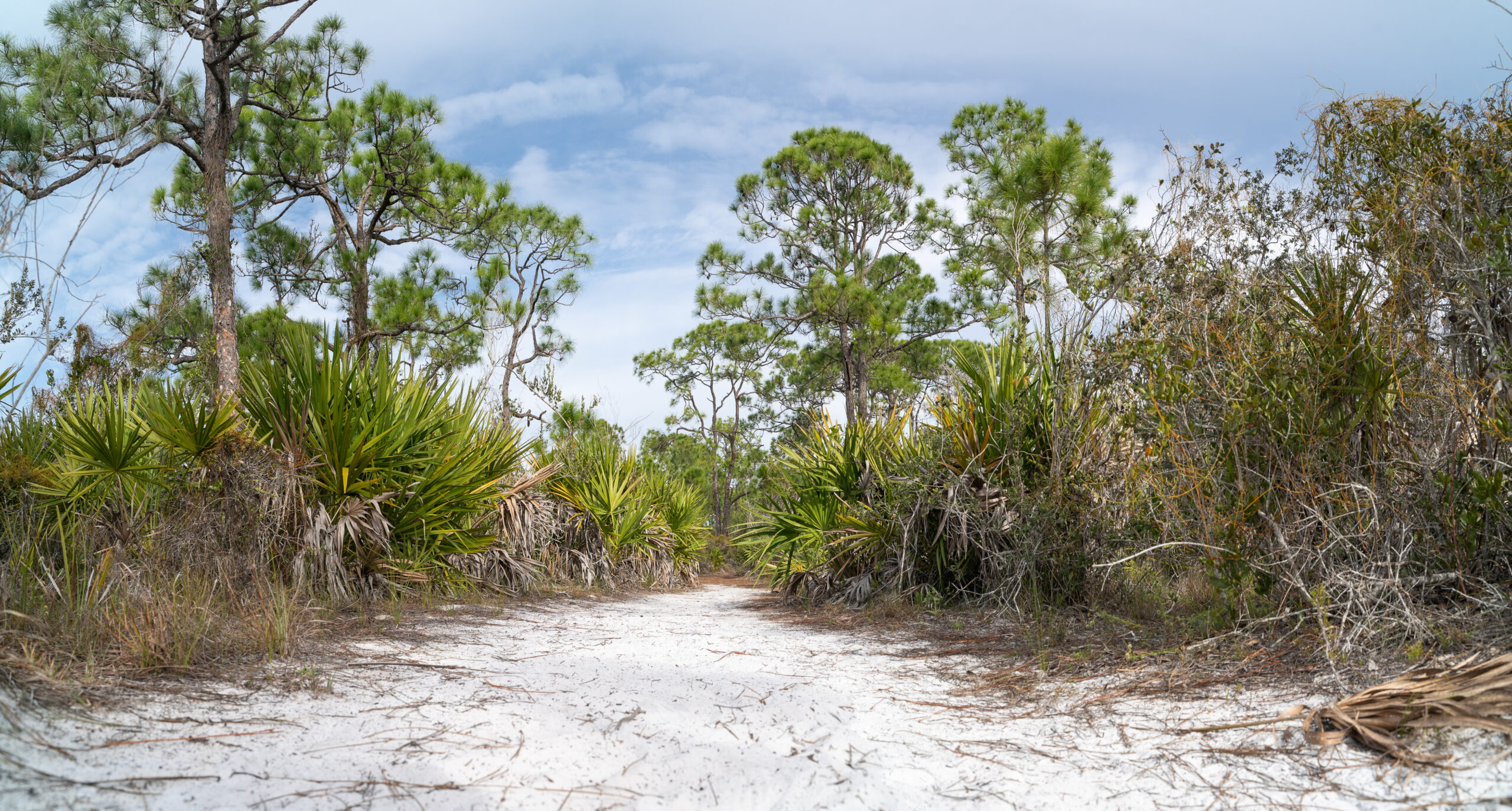
How to access the Preserve
From the Smith Entry Prow: Head toward the Kapnick Brazilian Garden and veer to the right when you see the sign for the Preserve. This will take you to the Sönne Family Ghost Orchid Boardwalk and to the wooded trails on its opposite side. These trails connect to the paved Lake Trail.
From the Kapnick Caribbean Garden: You can pick up the Lake Trail from Nina’s Pavilion.
From the Scott Florida Garden: Cross the Bergauer Bridge at the water feature and stay to your right. You’ll pass through a short, forested stretch and connect with a footbridge leading to the Lake Trail.
This article originally appeared in the Spring 2024 issue of Cultivate, the Garden’s magazine.

About the Author
Jennifer Reed is the Garden’s Editorial Director and a longtime Southwest Florida journalist.

